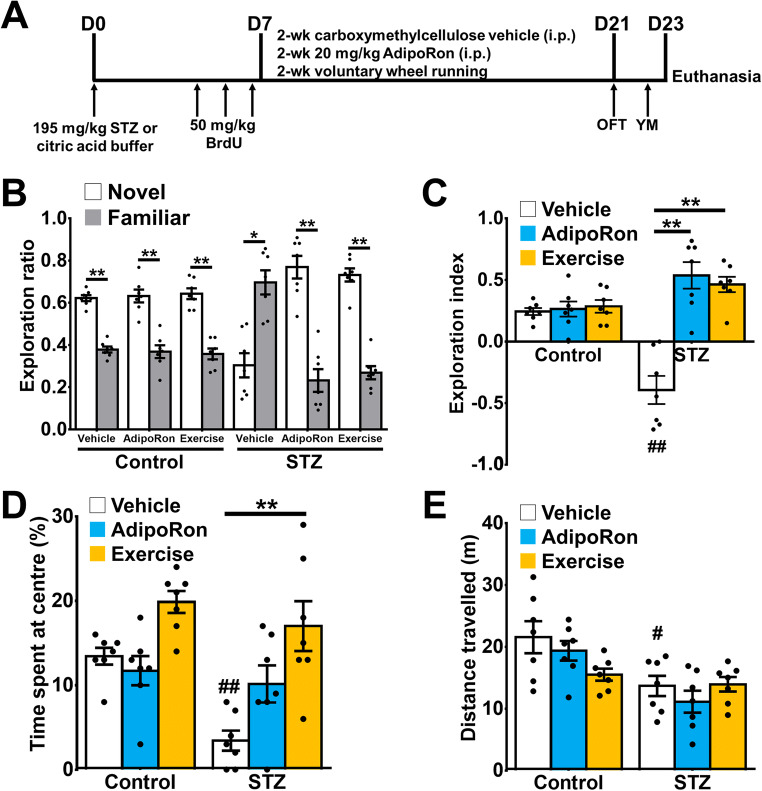Fig. 1.
AdipoRon treatment ameliorated diabetes-associated spatial recognition memory. A Animal treatment timeline (n = 7 animals per group). Previously reported Control-Vehicle and Control-AdipoRon data were used to support this study and are available at doi: 10.3390/ijms22042068 (44). B Exploration ratios in Y- maze. Neither AdipoRon treatment nor exercise altered novelty preference in the Y-maze in healthy control mice. Diabetic mice showed impairment in Y-maze as shown with a greater preference towards the familiar arm (paired t-test: *P < 0.005 vs. Novel arm), while both AdipoRon treatment and exercise restored the memory deficit in diabetic mice (**P < 0.005 vs. Novel arm). C Exploration indices in Y-maze. Diabetic mice presented spatial memory deficit (Tukey’s post hoc test: ##P < 0.005 vs. Control-Vehicle), whereas AdipoRon treatment (Tukey’s post hoc test: **P < 0.005 vs. STZ-Vehicle) and exercise (Tukey’s post hoc test: **P < 0.005 vs. STZ-Vehicle) ameliorated memory deficit. D Diabetic mice showed anxiety-like behaviour (Tukey’s post hoc test: ##P < 0.005 vs. Control-Vehicle), which could be restored by exercise (Tukey’s post hoc test: **P < 0.005 vs. STZ-Vehicle). E Diabetic mice had reduced locomotor activity (Tukey’s post hoc test: #P < 0.05 vs. Control-Vehicle). AdipoRon treatment and exercise (Tukey’s post hoc test: P > 0.05 vs. STZ-Vehicle) did not improve locomotor activity in diabetic mice

